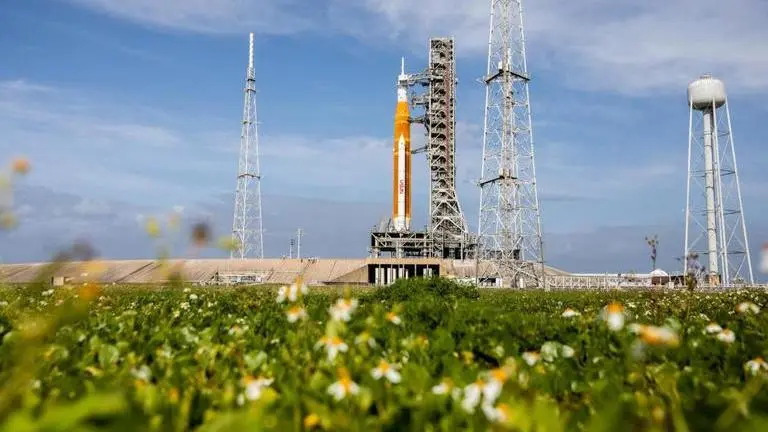Updated 7 August 2022 at 15:27 IST
NASA's Artemis I receives green light to hit launch pad; SLS rocket to roll out on Aug 18
NASA's Artemis I mission is targeted for launch on August 29, ahead of which the SLS rocket will be rolled out to the launch pad on August 19.
- Science News
- 3 min read

The Artemis I Moon mission has received the green light to proceed with the launch targeted for August 29. In a recent announcement, NASA revealed that the Space Launch System (SLS) rocket to be used for the mission will be rolled out to the Launch Complex 39B at the Kennedy Space Center on August 18. Mounted with the Orion capsule, the SLS rocket will complete a 6.4 kilometers journey from the Vehicle Assembly Building to Launch Complex 39B.
Live Now: NASA and @ESA experts discuss specific objectives for our uncrewed #Artemis I test flight around the Moon.
— NASA (@NASA) August 5, 2022
Set to launch on Aug. 29, the first @NASAArtemis mission is set to last four to six weeks. Discover more: https://t.co/GtMraRlgtV https://t.co/lYHZM9vZx1
Notably, the August 29 launch would mark the SLS rocket's debut launch and the second flight for the Orion module, the first being to low-Earth orbit (LEO) in 2014. If launched on the aforementioned date, Artemis I would last for a duration of 42 days and Orion will splash down on October 10. There also are backup dates on September 2 and September 6 with a mission duration of 39 days and 42 days, respectively.
Artemis I mission profile
The SLS rocket would first reach the LEO around 8.5 minutes after lifting off and will deploy the Orion spacecraft into a translunar orbit approximately 90 minutes after the launch. Orion's trip to the Moon will take four to six weeks (depending on the launch date) during which the mission teams will evaluate the spacecraft’s systems and correct its trajectory.
NASA says that Orion will fly farther than any spacecraft built for humans has ever flown and will stay in space longer than any ship has done without docking to a space station. According to the mission profile, Orion will fly 100 km above the lunar surface, and then use the Moon’s gravitational force to propel itself into a new deep retrograde, or opposite orbit about 40,000 70,000 km from the Moon.
Advertisement
Orion will remain in this orbit for six days to collect data and allow mission controllers to assess the performance of the spacecraft. NASA has installed three mannequins inside the Orion which would gather information about the launch conditions and the radiation astronauts would experience during their lunar journey. For this, the spacecraft will be made to pass through the Van Allen radiation belts, the areas filled with electrons and charged particles surrounding Earth.
The major objectives of Artemis I is to test Orion's endurance and make sure that it is capable of safely transporting astronauts to and from the Moon in future missions. After the spacecraft splashes down in the Pacific Ocean, NASA will carry out months of analysis before sending astronauts during Artemis II in 2024. The next human landing, however, will occur during Artemis III, which is expected to launch no earlier than 2025.
Advertisement
Published By : Harsh Vardhan
Published On: 7 August 2022 at 15:27 IST
